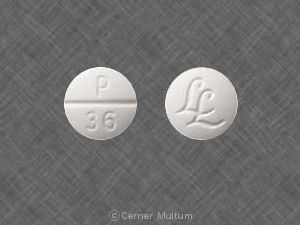What is Pyrazinamide?
Pyrazinamide is an antibiotic. The exact way that pyrazinamide works is unknown.
Pyrazinamide is used to treat tuberculosis (TB).
Pyrazinamide may also be used for purposes other than those listed in this medication guide.
What is the most important information I should know about Pyrazinamide?
Take all of the pyrazinamide that has been prescribed for you even if you begin to feel better. Your symptoms may begin to improve before the infection is completely treated.
Call your doctor immediately if you experience a fever, loss of appetite, nausea and vomiting, painful or swollen joints, yellowing of your skin or eyes, or darkening of your urine.
What should I discuss with my healthcare provider before taking Pyrazinamide?
Before taking pyrazinamide, tell your doctor if you have
- ever had an allergic reaction to pyrazinamide,
- liver disease,
- gout,
- kidney disease, or
- diabetes mellitus
You may not be able to take pyrazinamide, or you may require a lower dose or special monitoring during treatment if you have any of the conditions listed above.
Pyrazinamide is in the FDA pregnancy category C. This means that it is not known whether it will harm an unborn baby. Do not take this medication without first talking to your doctor if you are pregnant.
Pyrazinamide passes into breast milk and may affect a nursing baby. Do not take this medication without first talking to your doctor if you are breast-feeding a baby.
Pyrazinamide Side Effects
What are the possible side effects of Pyrazinamide?
If you experience any of the following serious side effects, stop taking pyrazinamide and seek emergency medical attention or contact your doctor immediately:
- an allergic reaction (difficulty breathing; closing of your throat; swelling of your lips, tongue, or face; or hives)
- a fever
- unusual weakness or fatigue
- nausea, vomiting, or loss of appetite
- yellow skin or eyes
- dark urine
- difficult or painful urination
- painful or swollen joints
- worsening gout; or
- a rash
This is not a complete list of side effects and others may occur. Call your doctor for medical advice about side effects. You may report side effects to FDA at 1-800-FDA-1088. You may report side effects to FDA at 1-800-FDA-1088.
Pyrazinamide Interactions
What other drugs affect Pyrazinamide?
Pyrazinamide may decrease the effects of allopurinol (Zyloprim). A dosage adjustment may be necessary if you take pyrazinamide during treatment with allopurinol.
Pyrazinamide may affect the Acetest and Ketostix urine tests for ketones. This reaction can cause a pink-brown color to appear.
Drugs other than those listed here may also interact with pyrazinamide. Talk to your doctor and pharmacist before taking any prescription or over-the-counter medicines.
What should I avoid while taking Pyrazinamide?
There are no restrictions on foods, beverages, or activities during treatment with pyrazinamide unless your doctor directs otherwise.
Pyrazinamide Dosage
How should I take Pyrazinamide?
Take pyrazinamide exactly as directed by your doctor. If you do not understand these instructions, ask your pharmacist, nurse, or doctor to explain them to you.
Take each dose with a full glass (8 ounces) of water.
Take all of the pyrazinamide that has been prescribed for you even if you begin to feel better. Your symptoms may begin to improve before the infection is completely treated.
Pyrazinamide is usually combined with one or more other tuberculosis medicines.
Store this medication at room temperature away from moisture and heat.
What happens if I overdose on Pyrazinamide?
Seek emergency medical attention.
Symptoms of an pyrazinamide overdose are not well known. Liver damage has been detected.
What happens if I miss a dose of Pyrazinamide?
Take the missed dose as soon as you remember. However, if it is almost time for your next regularly scheduled dose, skip the missed dose and take the next one as directed. Do not take a double dose of this medication.
Sourced from everydayhealth.com

